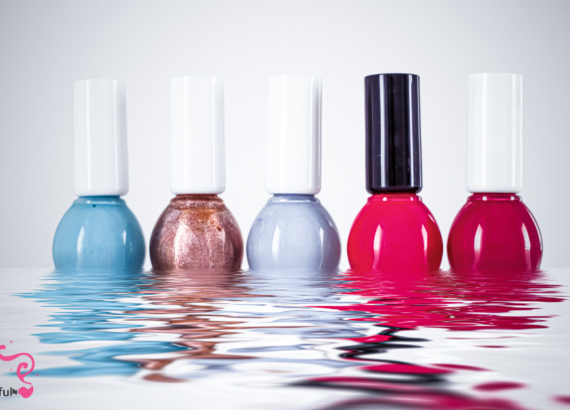10 Tips to Achieve Flawless Acrylic Paint Without Brush Strokes

Are you tired of seeing those unsightly brush strokes in your acrylic paintings? Don’t worry; you’re not alone. Acrylic painting is a versatile and vibrant medium, but getting a smooth, brush stroke-free finish can be a bit tricky. However, with the right techniques and a little practice, you can achieve that flawless look you’ve been dreaming of. In this blog, we’ll share ten tips that will help you get acrylic paint without brush strokes, ensuring your artwork looks professional and polished.
I. Choose the Right Brushes for Smooth Strokes
The first step in achieving a brush stroke-free masterpiece when beginning your acrylic paint journey is to choose the right brushes. The type and quality of brushes you use can have a significant impact on the final appearance of your painting. Here’s why picking the right brushes is important:
1. Go Synthetic:
Choose high-quality synthetic brushes made specifically for acrylic paints. These brushes have been designed to work perfectly with acrylics, making them an excellent choice for achieving a smooth finish. Synthetic bristles have a finer texture than natural bristles, which reduces the possibility of visible brush strokes on your canvas.
2. Size Matters:
Carefully consider the size of your brushes. Smaller brushes are ideal for fine details, whereas larger brushes are better suited for broad strokes and filling in larger areas. Using a variety of brush sizes gives you more control over your painting, allowing you to create intricate details as well as broad, smooth surfaces.
3. Keep Them Clean:
No matter how good your brushes are, they won’t perform well if they’re not kept clean. After each painting session, thoroughly clean your brushes with water or an acrylic brush cleaner. This practice prevents paint buildup in the bristles, ensuring that your brushes stay in good condition and continue to produce smooth, stroke-free results.
Investing in the right brushes and taking proper care of them sets the stage for your acrylic painting success. But there’s more to creating a flawless, brush stroke-free masterpiece. Let’s explore additional tips to enhance your acrylic painting skills.
II. Master the Art of Paint Thinning
Once you’ve armed yourself with the right brushes, the next secret to conquering brush strokes in acrylic painting is understanding the magic of paint thinning. Acrylic paints are water-based, offering you the versatility to control their consistency. Here’s how to thin your paints for that seamless, brush stroke-free finish:
1. Use Water Wisely:
Acrylic paints can be thinned with water to achieve the desired consistency at a low cost. Dip your brush in water, then mix it with your acrylic paint on your palette until the consistency is right. This thinned paint will flow more smoothly onto your canvas, hiding brush strokes.
2. Investigate Acrylic Mediums:
In addition to water, acrylic mediums designed specifically for thinning paint can be used. These mediums preserve the vibrancy and opacity of the paint while achieving the desired fluidity. Matte or glossy mediums, gel mediums, and glazing liquids are some of the possibilities.
3. Balance is essential:
Maintain a delicate balance while thinning your paint. Excessively thinned paint can become too transparent and lose its vibrancy and coverage. The goal is to improve the flow of the paint without sacrificing its visual intensity.
When you master the art of paint thinning, your acrylic paints will glide onto the canvas with ease, leaving a smoother surface and fewer visible brush strokes. But this is only the beginning. Let’s look at some more techniques for improving your acrylic painting skills.
III. Embrace the Palette Knife Technique
Palette knives can be your best friend when it comes to breaking free from brush strokes and achieving a lustrous, brush-free surface. These versatile tools provide a distinct method of applying acrylic paint, resulting in stunning, smooth results. Here are some reasons why you should embrace the palette knife technique:
1. Paint Without Boundaries:
Palette knives allow you to paint without the constraints of traditional brushes. Instead of brushing the paint onto the canvas, you’ll be spreading it with the knife’s flat edge. This unconventional method offers greater control over the paint’s thickness and distribution.
2. Control is in Your Hands:
With a palette knife, you have precise control over the application of paint. You can layer paint smoothly, scrape it back for texture, or create intricate details with ease. The knife’s edge can also be used to blend colors seamlessly, eliminating harsh brush strokes.
3. Achieve Texture and Depth:
If you’re aiming for textured effects or impasto techniques, palette knives are your go-to tools. They allow you to build up layers of paint, creating depth and dimension in your artwork. This adds a tactile quality to your painting that’s hard to achieve with brushes alone.
The palette knife technique might require a bit of practice to master, but the results are well worth it. You’ll find that it opens up new possibilities for creativity while helping you create a more even and brush stroke-free surface.
But we’re not done yet—there are more tricks up our artistic sleeves to explore. Let’s dive deeper into the world of acrylic painting.
IV. Work as quickly as possible
Acrylic paint dries quickly, which can result in visible brush strokes if you’re not careful with your application. Work quickly and confidently to avoid this. Plan your painting ahead of time so you know where you want each stroke to go, reducing the need for excessive layering.
V. Master the Art of Blending and Feathering
To truly achieve a brush stroke-free masterpiece, go beyond simply brushing acrylic paints onto the canvas. Consider the art of blending and feathering instead. Soft brushes or sponges are used to create a seamless transition between colors, minimizing the visibility of individual strokes. Here’s how to get the hang of it:
1. Soft Brushes:
Use soft, clean brushes. When blending or feathering the paint, these brushes have delicate bristles that will not leave harsh marks. For this, a round or flat brush with soft, flexible bristles is ideal.
2. Sponges:
Sponges are another great tool for creating smooth transitions in your acrylic paintings. They’re especially useful for working with large areas or creating gradient effects. To blend and feather the colors, dampen the sponge slightly and gently dab or sweep it over the painted surface.
3. Smooth Transitions:
When blending or feathering, pay special attention to areas where different colors meet. To create seamless transitions between these areas, use light, controlled strokes. This eliminates the visual breaks that brush strokes can cause.
4. Patience:
Blending and feathering necessitate a patient and gentle touch. Take your time and gradually increase the effect. Applying too much pressure can remove too much paint or create unwanted texture.
You’ll discover a newfound ability to create smooth, continuous surfaces with no visible brush strokes by incorporating the art of blending and feathering into your acrylic painting process. It’s a technique for adding depth and harmony to your artwork, as well as improving its overall visual appeal.
VI. Purchase Acrylic Retarders
Acrylic retarders are additives that help acrylic paint dry faster. You’ll have more time to work with the paint if you use a retarder, allowing you to blend and smooth it out more effectively. This can drastically reduce the visibility of brush strokes in your artwork.
VII. Use Several Thin Layers
A key strategy for achieving a brush stroke-free finish is to build up your painting with multiple thin layers. Instead of applying a single thick layer of paint to the canvas, apply several thin coats, allowing each one to dry before adding the next. This technique reduces the texture caused by brush strokes, resulting in a smoother surface.
VIII. Sand Down Your Canvas
If your canvas has a noticeable texture, consider lightly sanding it before you begin painting. By gently sanding the surface with fine-grit sandpaper, you can reduce the texture and achieve a smoother finish with your acrylics.
XI. Embrace the Mesmerizing World of Pouring Techniques
Pouring techniques could be your next artistic adventure if you’re ready to explore the avant-garde side of acrylic painting. This modern approach can produce stunning results without the use of a single brush stroke. Here’s how to get started in the fascinating world of pouring:
1. Make Your Pouring Mix:
Begin by making a pouring mixture. Combine acrylic paint that has been thinned with a pouring medium. The pouring medium maintains the consistency of the paint while allowing it to flow freely without losing vibrancy or coverage. Experiment with different ratios to achieve the fluidity you desire.
2. Allow Gravity to Lead:
Place your canvas on a level surface and slightly elevate it with objects such as cups or small blocks at its corners. This angle will allow the paint to flow more freely. Pour your paint mixture onto the canvas and let the colors blend and move around as they please.
3. Tilt and Swirl:
Gently tilt and swirl the canvas to control the movement of the paint and create mesmerizing effects. This hands-on approach allows you to direct the paint, ensuring that it covers the entire surface smoothly. The results are frequently stunning, with smooth color transitions and a remarkable lack of brush strokes.
4. Layer for Depth:
Pouring makes it simple to layer colors. While the canvas is still wet, pour one color over another to create depth and interesting visual effects. Brushwork is not required because the layers blend organically.
5. Embrace the Unpredictable:
Pouring techniques can produce unexpected and one-of-a-kind results. Let go of strict control and embrace spontaneity. Each piece will have its own unique personality, making this technique both exciting and rewarding.
X. Practice, Practice, Practice.
Practice is essential in any art form. Don’t give up if your first few attempts at removing brush strokes don’t produce perfect results. Continue to experiment with these techniques and improve your skills. With practice, you’ll be able to create acrylic paintings that are free of brush strokes and full of professional charm.
conclusion
In conclusion, achieving acrylic paint without brush strokes is not only possible, but also attainable with the right techniques and tools. Remember to start with good brushes, work quickly, blend and feather your paint, and experiment with different techniques such as pouring. You’ll soon be able to create stunning acrylic artworks that are smooth, seamless, and truly captivating with practice and patience.
So, grab your acrylic paints, implement these tips, and watch your artistry soar to new heights as you say goodbye to those pesky brush strokes for good! Have fun painting!








